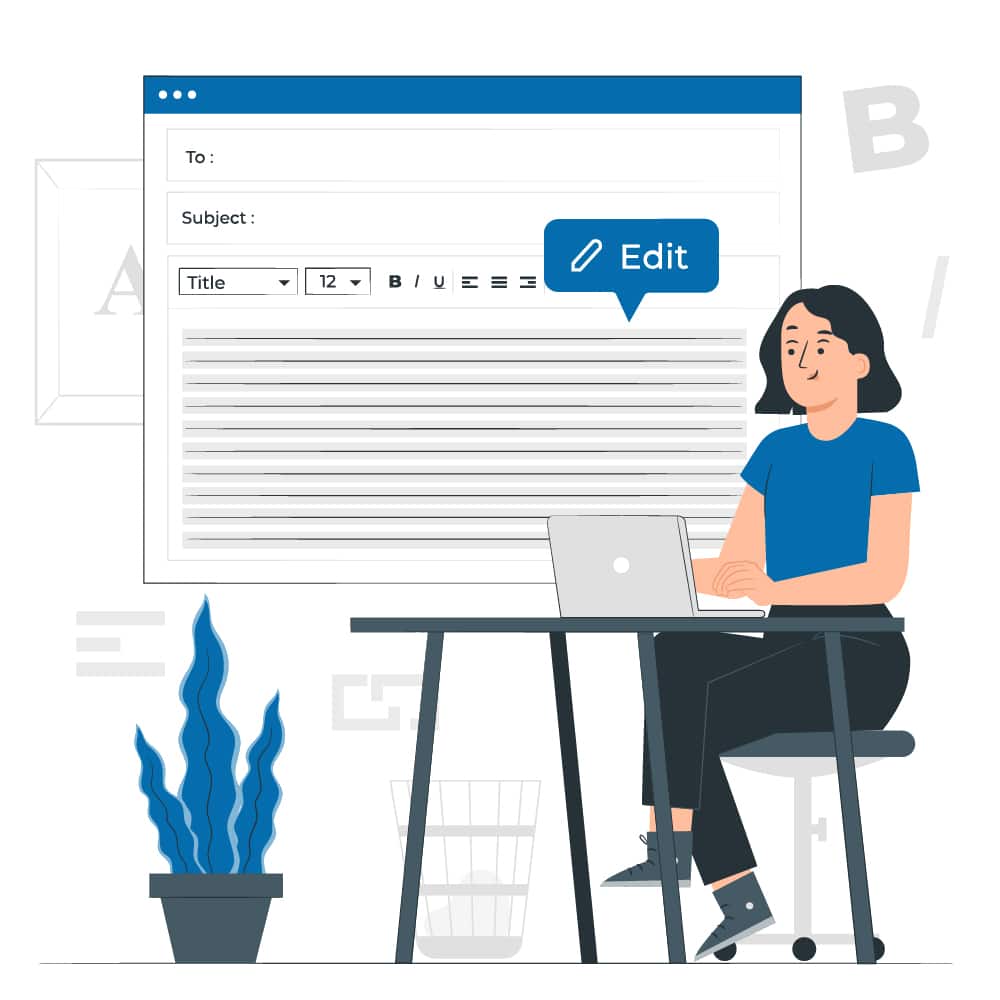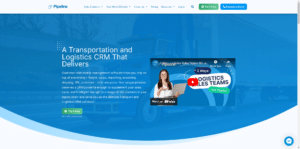Do you want to write effective sales emails that get you the results you want? Here are the best tips for you to get a higher response rate on your sales email campaigns.
Having trouble getting responses on sales emails? You’re not alone. It’s widely believed that less than five percent of all sales emails get a response. Only five percent! Think about all the wasted time and effort of sending 100 emails, to get a handful of responses back. But this isn’t the way it needs to be. And more people are realizing it’s possible to get higher response rates on your sales emails.
And the sender was probably using customer relationship management (CRM) software in order to send the email. Gone are the days of organically sending emails on a whim, despite what the sender will have you believe. Today the best way to send successful sales emails is to track, analyze, test, and revise. Companies have also created email finding tools.
Tracking and sending emails through a CRM will maximize the ROI of time spent emailing and get you the results you need. The following tips and templates will help you send better sales emails. Get in line with the most successful salespeople in the game, and take action with your email marketing data.
Part I. The 11 Winning Tips for Sales Emails
1. First! Set up tracking
Successful email marketers don’t send out an email and forget about it. Even if you’re on top of your inbox at all times, are your emails really helping you connect with your prospects and drive sales forward?
Email can be an indispensable tool in sales, but can also be frustratingly non-transparent. Imagine what you could do if you knew who was engaged with your email.
Thankfully, you no longer have to imagine. When CRM software is integrated with your email platform (example Outlook), you can set up email tracking.
Pipeline CRM’s Email Tracking feature – You will know who opens your email, clicks or downloads content, and how to best follow up with your leads.
2. Test when you send them
With email, timing is everything. Just because you’re ready to send out an email before you leave at the end of the day does not mean your leads are ready to read it. Email is only effective if your lead is prepared to read and absorb it.
Professional email marketers have been using software and experimenting to find the best time to send email for years now. And their conclusion on when the best time is to send email? Well, it depends.
When we looked at email campaigns, we found that most email campaigns are sent between 8AM – 5PM. Peak send times are both 9AM – 12PM, and from 2PM – 4PM. And to make it even more confusing – we discovered a clear difference in open rates by send time within specific industries.
- Software companies have dramatically lower open rates for morning campaigns.
- Marketing and advertising companies saw higher open rates in the morning campaigns.
- Financial services companies saw peak engagement in the afternoon.
Pipeline CRM’s integration with Mailchimp: If you have customers in multiple time zones, you can use Pipeline CRM integration with Mailchimp to deliver messages at the same time in a local time zone. Send email messages to your leads at the optimum time in their locality and maximize the chances your message hits the mark.
3. Speak their language
If your emails are getting low response rates or low open rates, it may simply be because there’s no connection with your audience. Emails should speak the language of your ideal buyer.
Understanding your audience and how to speak to them is a fundamental part of sales. Use this knowledge in the emails you send. If you’re not sure what the optimal language is for your emails, run email tests and see what gets the best result. You’d be surprised by the response rate improvement in small changes to language.
Another tip? Think about the words and phrases they must get dozens of times a day in emails. Don’t use generic words like “outreach” or “touch base.” If you’re looking to make a real connection, be specific about why you’re emailing and why they should respond.
4. Lean on other communication channels
Email is just one part of your communication strategy – not the only part! Consider calling your contact. Tell them you want to draw their attention to something specific in your message. Be purposeful in your communication – even if they can’t talk to you right at that moment, schedule time to connect with them in the future.
Email is one of several communication tools that you have as a salesperson. Use it to automate your sales process, and combine email with phone calls, social media like LinkedIn, or other communication methods to maximize the number of touchpoints you have with your leads.
5. Test subject lines
To improve response rates, you need to first improve open rates. If someone doesn’t open your email, they can’t read your content or take the next step to learn more about your product or service.The best way to do this is by writing killer subject lines that cut through all the competing noise in their inbox.
Think about it, you probably receive dozens, if not hundreds, of email messages every day. What are the emails that you actually pay attention to? Emails with a powerful subject line or compelling call to action are more likely to be opened.
Through our own tests, we’ve found that the number of characters in the subject line of your email does impact the open rate. Subject lines with less than 40 characters tended to perform the best overall. This aligns with trends towards viewing email on mobile – most mobile email browsers restrict your view to roughly 40 characters. And we’ve had most success with subject lines less than 10 characters.
6. Make it personal
More personalized emails will always perform better. When the recipient feels like there’s another person on the other end, and they’re not just another line item in an email blast.
We find that truly personal details – such as how we met, or details specific to their company – perform better than old school personalization attempts such as their name in the subject line. By now everyone knows you can easily leave a [First name] tag in the subject line. So this quick trick doesn’t feel as personal anymore.
Personalization ‘en masse’ is becoming passe in some industries, so it’s important to test.
7. Retry old failed emails
You know the old cliche, “if at first you don’t succeed, try again.” In this case, the cliche exists because it’s true. But how will you know the success or failure of an email unless you’re tracking its success?
Emails are only effective if they actually make it to your client’s inbox! Sometimes email fails to make it to the inbox because a server is down, or there is some other unexpected error.
With a CRM like Pipeline CRM, you can easily find emails that didn’t make it to the recipient and individually resend them to make sure everyone has received your email.
8. Make it easy for them to say yes
Or, in other words, make it hard for them to say no.
Do you provide a clear reason to take action from your email marketing campaign? Having a clear call to action is critical to receiving a timely response. So always make sure you give your leads a good reason to take action right now.
Some quick strategies to help you improve:
- Choose your call to action words carefully. Phrases such as Order Yours Here, Download Here, Sign Up Today, etc. are clear and actionable
- Make your call to action stand out by making it a different size or color. At Pipeline CRM, we’ll often make our call to action a bright button to click.
- Give your call to action urgency by asking your leads to take action immediately.
9. Make it easy for yourself to capture leads
You never know when a chance meeting at a trade show could lead to a huge new deal. But with a pocket full of business cards, you need to wait until you’re at your desk to send a formal follow-up email, right? Wrong!
On-the-go salespeople know about the importance of staying on top of potential new leads.
And you need to strike while the iron is hot. Some of the best salespeople that we know are masters at networking, cultivating new leads and following up to qualify contacts. So when you’re on the run, send out a quick email to say it was nice to meet them and you’ll follow up more formally when you’re back at the office. No more worrying about losing out on potential deals while you send out follow-ups.
10. Let your emails stand out visually
Once they have your email opened, you can differentiate your email message with a stylish layout. Test the fonts, text sizes, and the text colors that work best for you. Customize your signature, add images, format text, insert your logo and links to your website and social media profiles. Just make sure you also test the load time for opening the email, and what the experience looks like on mobile.
We have found in some cases that less is more when it comes to email templates.
But you’ll only know if you, you guessed it — test it.
11. Never “set and forget” a template.
So, you’ve landed on an email template that works for you — congrats! Your work is done and you have an email template that can be recycled and reused for years, right? Wrong. Email templates are a useful convenience and help to provide some consistency across teams. BUT templated emails can hurt if you never work to improve them.
Template performance tends to decline through time. This phenomena is a little bit of a mystery. And the disparity between template vs. non-templated emails is most evident when you’re sending to a very small group of people or a very large group. In our research, email templates are best for mid-size campaigns (10 to 100 recipients).
Overall: when it doubt, ABT (always be testing).
Part II: Frequently Asked Questions
Part III. Best Practice Sales Email Templates to Get Started
These are templates we’ve compiled based on the average sized business, in a general business setting. By no means should they be guaranteed to work as-is. But, they will help you get started, so you can then tweak them to be personalized, aligned with your recipient’s needs, and utilizing their language. And then tested continuously after that.
The main parts of a sales email we consider:
- Subject – Get attention, and keep it short. Give just enough information so they will want to click through.
- Opening – Use this chance to flatter them. Either by remembering them, noticing them, or even complimenting their work.
- Body – Make a connection. Maybe ask a specific question that relates to their problems and offer how you might fix it.
- Closing – Give clear direction, and make it easy for them to respond.
- Signature – Just the basics. All that’s important right now is your name, company and contact details.
Cold Email Template
Remember to keep it about them. You’re introducing yourself here, but keep the focus on them and their works and/or possible problems.
Subject: A fan of your work – I’d love to help.
Your recent [article/presentation/post] ________ stuck out to me, since I’m interested in __________.
I’d like to hear more about the issues you’re having with ______________.
Quick question: Do you feel like you’re putting in way too much effort for the results you’re getting? I’ve helped others with this, and I think I could help you, too.
I’m available tomorrow morning 9-12 EST. Can we chat?
Post-Networking-Event Template
This is for a quick email you can send after you have a chance to meet with a possible prospect. Say just enough to remind them who you are and the conversation you had.
Subject: Let’s keep this conversation going.
It was great meeting you at ________ yesterday.
I keep coming back to your comment about _________ .
Would you be interested in speaking with me and my partner about how we might help?
Or possibly point me in the direction of the decision-makers at your company.
Looking forward to continuing this conversation.
Follow-up Template After No Response
Second try
Subject: [same as before]
I didn’t hear back from you before. Do you have time to talk this week?
I’m free Tuesday afternoon 12pm-3pm PST
Or Thursday afternoon 2-3pm PST.
I think we could make great things happen together.
Subject: [same as before]
I wanted to show you how we’ve helped companies like yours before. [Insert links to case studies or testimonials]
Are you free for a call this afternoon?
Follow-up Template After Communication Has Stalled
Subject: [Same]
I was really looking forward to working together, and I hope you still are too. My apologies if I dropped the ball. Care to get back on track?
You mentioned your issues with ________ in particular. So I shared a PDF of how we’ve helped with this before.
Are you available for a call this week?
Looking forward to getting started here.
BONUS Tip # 12: The easiest way to send sales emails that work? Integrate your emails with your CRM software.
Pipeline CRM can easily help you perform all the tips, and send/test all the templates we have listed above. You can easily see and analyze who is receiving your message, who’s reading your emails, and who is clicking to take some action from your email.
If someone went as far as to open your email, click on the call to action, and not buy from you, that’s still a hot lead! Pipeline CRM helps you track every interaction so you never miss an opportunity.




